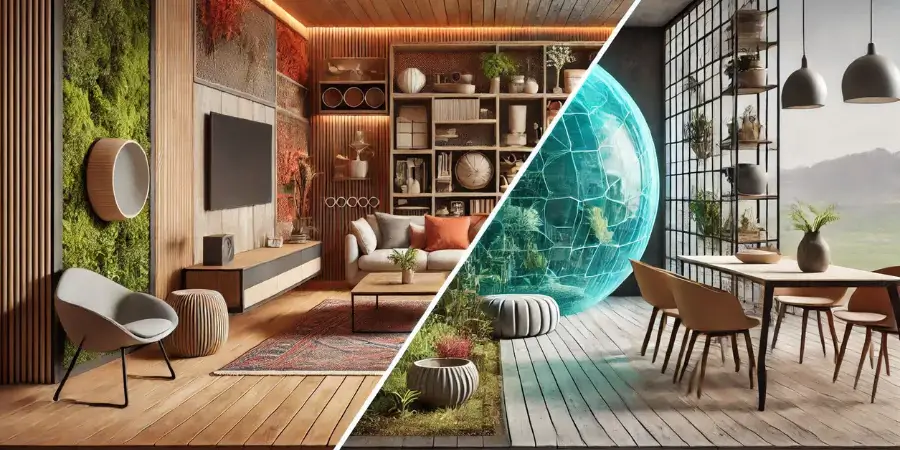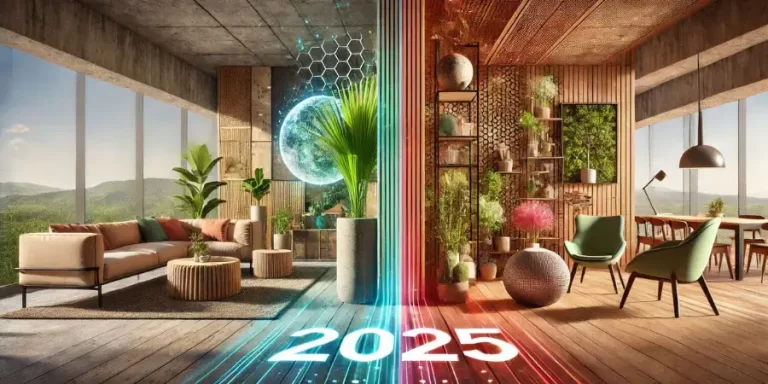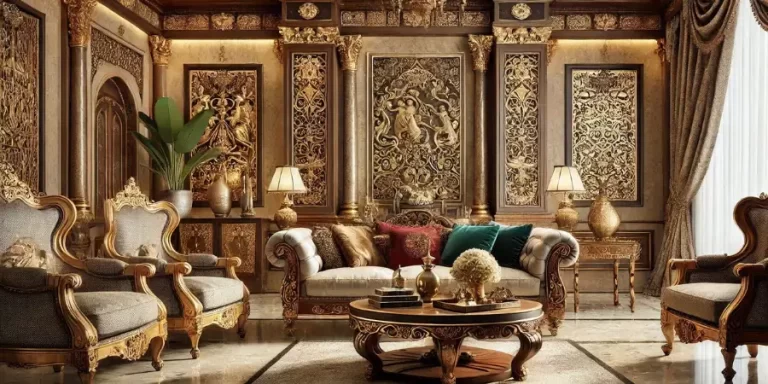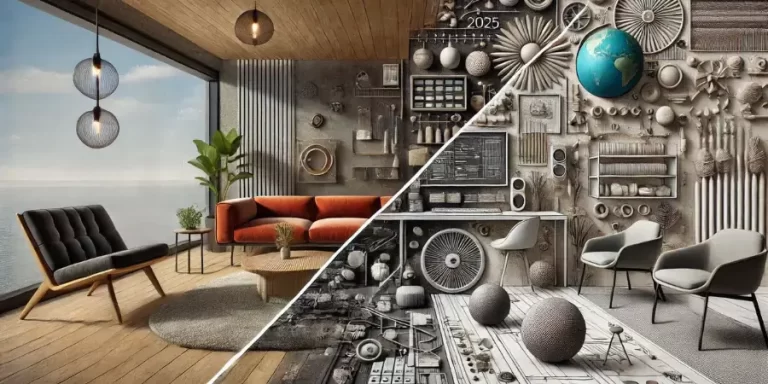The rise of smart homes has been a game-changer in the world of interior design. What was once seen as a futuristic concept is now becoming a reality for homeowners around the world. Smart homes combine technology with everyday living to enhance comfort, convenience, and energy efficiency. As technology continues to evolve, so too does its integration into our living spaces. In this article, we’ll explore how interior design is evolving in the age of smart homes, the benefits of integrating technology into your home design, and what the future holds for smart home innovation.
What is a Smart Home?
A smart home is a residence that uses internet-connected devices to automate and control various systems within the home. This can include everything from lighting, temperature, and security systems to more complex setups involving voice-controlled assistants, smart appliances, and even smart furniture. The goal is to create a more efficient, convenient, and comfortable living environment where technology works seamlessly in the background to improve daily life.
The Convergence of Technology and Interior Design
Historically, interior design has been about aesthetics, functionality, and creating comfortable spaces. Now, with the rise of smart home technology, it’s about integrating cutting-edge tech solutions into the design without compromising on style or comfort. The challenge for designers today is to create spaces where technology enhances the experience without overshadowing the design elements.
Here’s how technology is shaping the future of interior design:
- Smart Lighting Systems
Lighting is one of the first and most accessible ways to integrate technology into a home. Smart lighting systems allow homeowners to control the brightness, color, and timing of lights through voice commands, apps, or motion sensors. These systems can be programmed to create different moods for different times of day, save energy, and even adapt to natural light patterns.
In interior design, smart lighting allows designers to craft dynamic and versatile spaces. Imagine a living room that brightens automatically when you walk in or a bedroom that gradually dims as you prepare for bed, all controlled by your voice or smartphone. Such systems blend functionality with design, creating a space that feels personalized and responsive.
- Voice-Controlled Smart Assistants
Smart speakers and voice-controlled assistants, such as Amazon Alexa, Google Assistant, and Apple’s Siri, are now common household items. These devices integrate seamlessly with various smart home systems, enabling homeowners to control lighting, temperature, music, and more with simple voice commands.
From an interior design perspective, these assistants can help create a minimalist aesthetic. Without the need for cluttered switches or remotes, users can rely on voice commands to control everything, making spaces feel more organized and streamlined. Designers can incorporate hidden speakers or place them strategically to blend with the décor.
- Smart Thermostats
Temperature control is another area where technology and interior design converge. Smart thermostats, like Nest or Ecobee, can learn your habits and preferences, adjusting the temperature of your home to suit your needs. They can also be controlled remotely via an app, ensuring that the house is always at the perfect temperature when you arrive.
Interior designers are now using smart thermostats to enhance the energy efficiency and comfort of a space. These devices can be placed in discreet locations, integrating into the overall design while reducing the need for bulky, outdated thermostats. Smart thermostats can help designers create a balanced climate control system, ensuring that both functionality and style are prioritized.
- Smart Furniture
Furniture is no longer just about comfort and utility; it’s also becoming smarter. Today, we have desks that raise and lower at the touch of a button, sofas that adjust to your preferred seating position, and even beds that monitor your sleep quality. These smart furniture pieces are designed to improve the comfort and functionality of a space while seamlessly integrating with other smart home systems.
Incorporating smart furniture into interior design can create a more personalized, user-friendly environment. Designers can blend these pieces into a room’s aesthetic, ensuring they complement the overall theme while offering advanced technological features. For example, a smart coffee table can store charging cables, while a smart sofa could adjust to your body’s shape, creating a more ergonomic and comfortable living space.
- Smart Security Systems
Smart security systems have revolutionized the way we protect our homes. From doorbell cameras and motion sensors to smart locks and surveillance cameras, these systems can be controlled from a smartphone or voice assistant, allowing homeowners to monitor their property remotely.
For interior designers, this means that security devices can be integrated into the home’s overall design without being intrusive. Discreetly placed cameras, sensors, and smart locks can blend with the architecture, maintaining the home’s aesthetics while providing top-tier security. These innovations also offer new design possibilities, such as customized security lighting that turns on automatically when someone approaches your door.
The Benefits of Smart Homes in Interior Design
The integration of smart technology into home interiors offers a variety of benefits that enhance both functionality and aesthetics. Here are some key advantages:
Increased Efficiency: Smart home devices, such as thermostats and lighting systems, can help reduce energy consumption by adjusting to your habits and preferences. This leads to lower utility bills and a more sustainable living environment.
Convenience and Comfort: With voice assistants, smart thermostats, and automated systems, controlling the home environment has never been easier. These devices provide a more convenient and comfortable lifestyle.
Customization: Smart homes allow homeowners to tailor their living spaces to their exact needs, whether it’s adjusting lighting based on mood or creating personalized temperature settings for different rooms.
Increased Value: A well-designed smart home can increase property value. Modern buyers are increasingly looking for homes that offer both functionality and advanced tech features, making a smart home a desirable asset.
Improved Security: Smart security systems, cameras, and locks provide peace of mind, offering homeowners the ability to monitor their property remotely and receive instant alerts in case of a security breach.
The Future of Smart Homes in Interior Design
As technology continues to advance, the future of smart homes holds even more exciting possibilities for interior design. We can expect to see more integration of artificial intelligence (AI) and the Internet of Things (IoT) in the home, enabling devices to communicate and work together seamlessly. For example, AI could allow a home to anticipate the needs of its inhabitants, adjusting lighting, temperature, and even furniture layout based on their preferences.
Additionally, as virtual and augmented reality technologies continue to evolve, interior designers may use these tools to visualize smart home setups before implementation, giving clients a more immersive and interactive design experience.
Conclusion
The future of smart homes is transforming the way we live, and interior design is at the forefront of this revolution. By integrating smart technology into living spaces, designers are not only improving functionality and comfort but also enhancing the overall aesthetic of the home. From smart lighting and furniture to AI-powered home systems, technology is blending seamlessly with interior design, offering homeowners a more personalized, efficient, and comfortable living environment. As we look to the future, the possibilities for smart homes in interior design are endless, and we can expect even more innovative solutions to enhance our daily lives.




